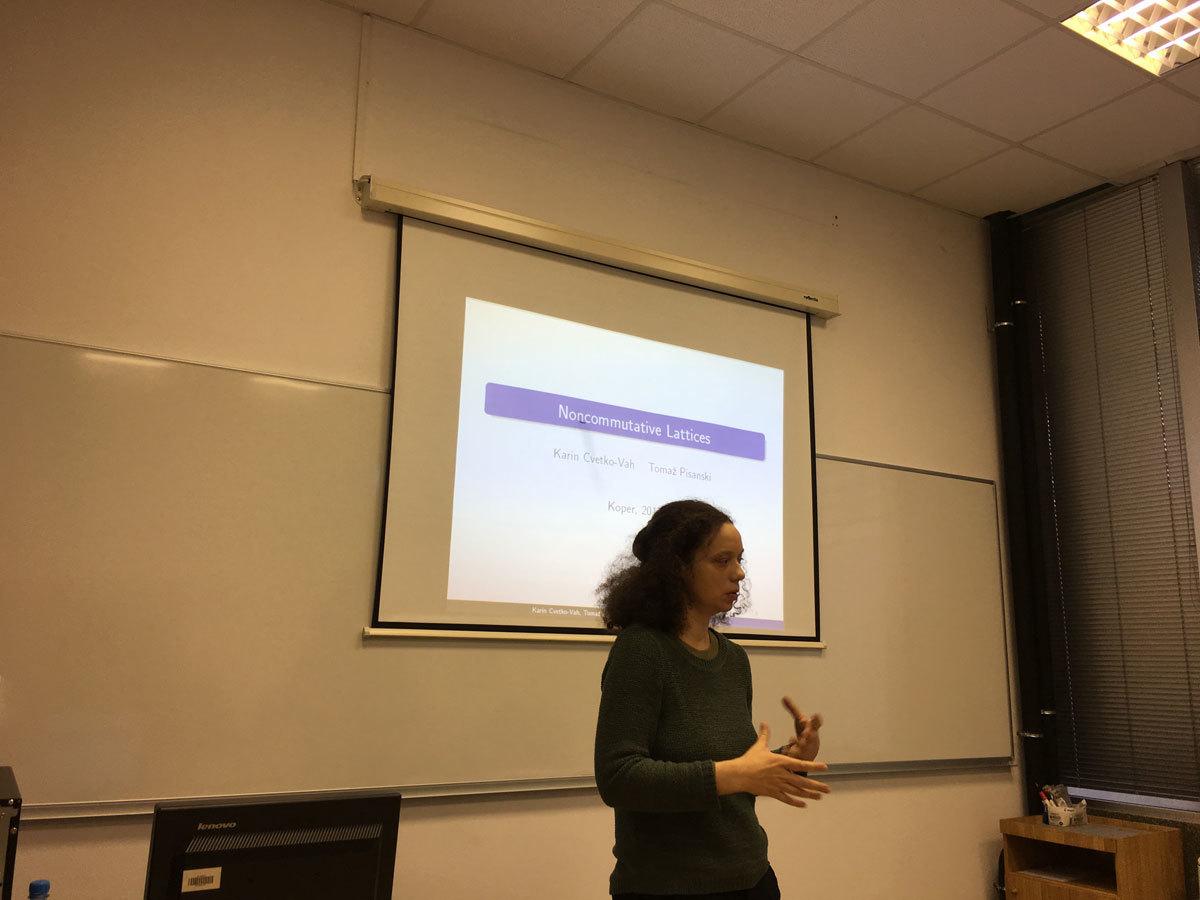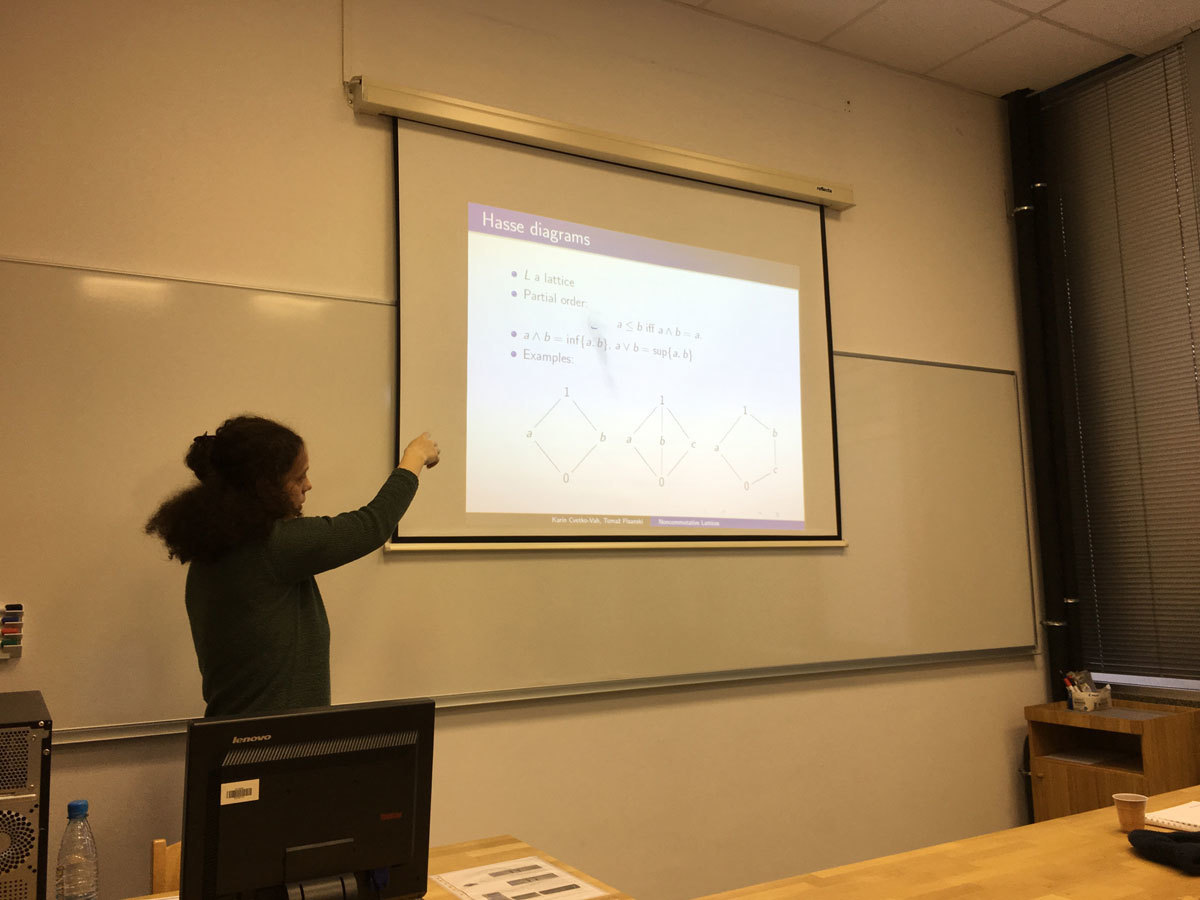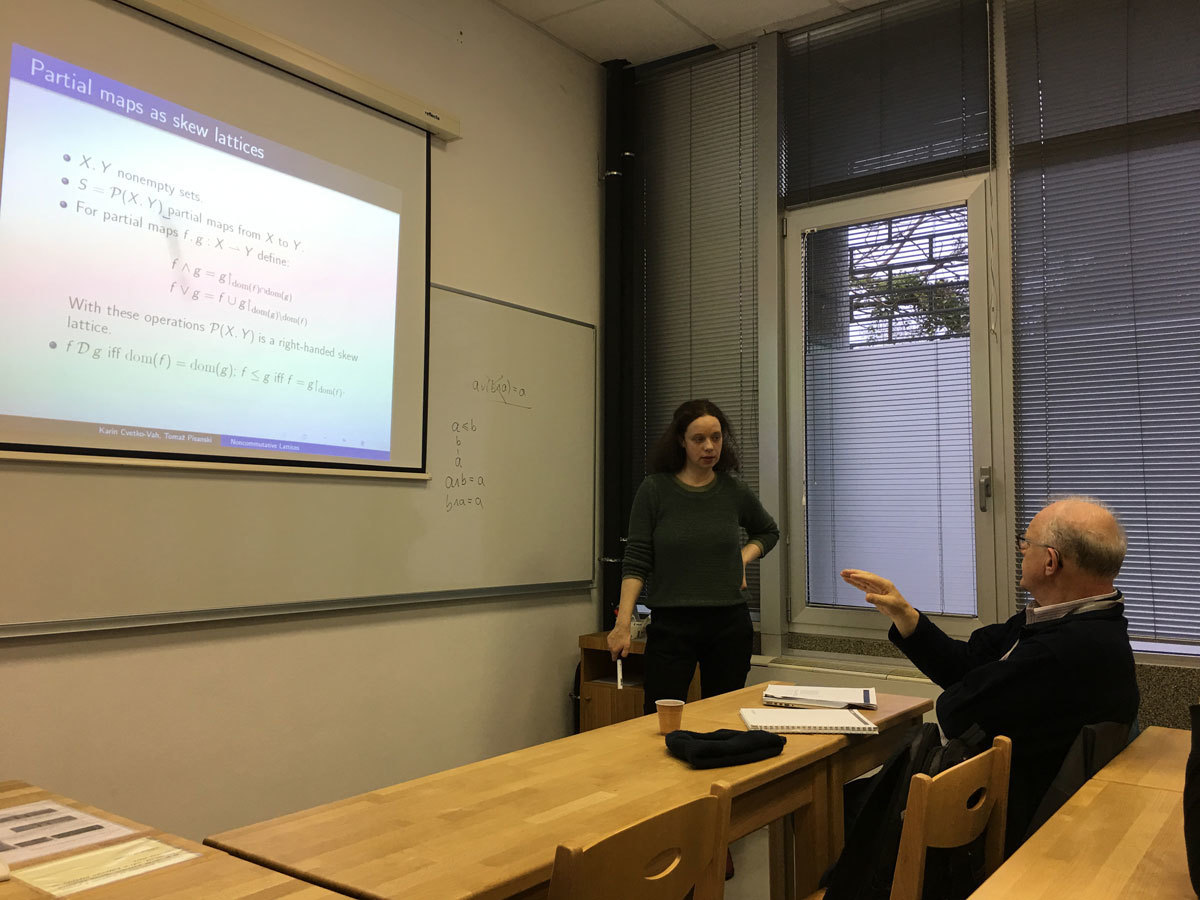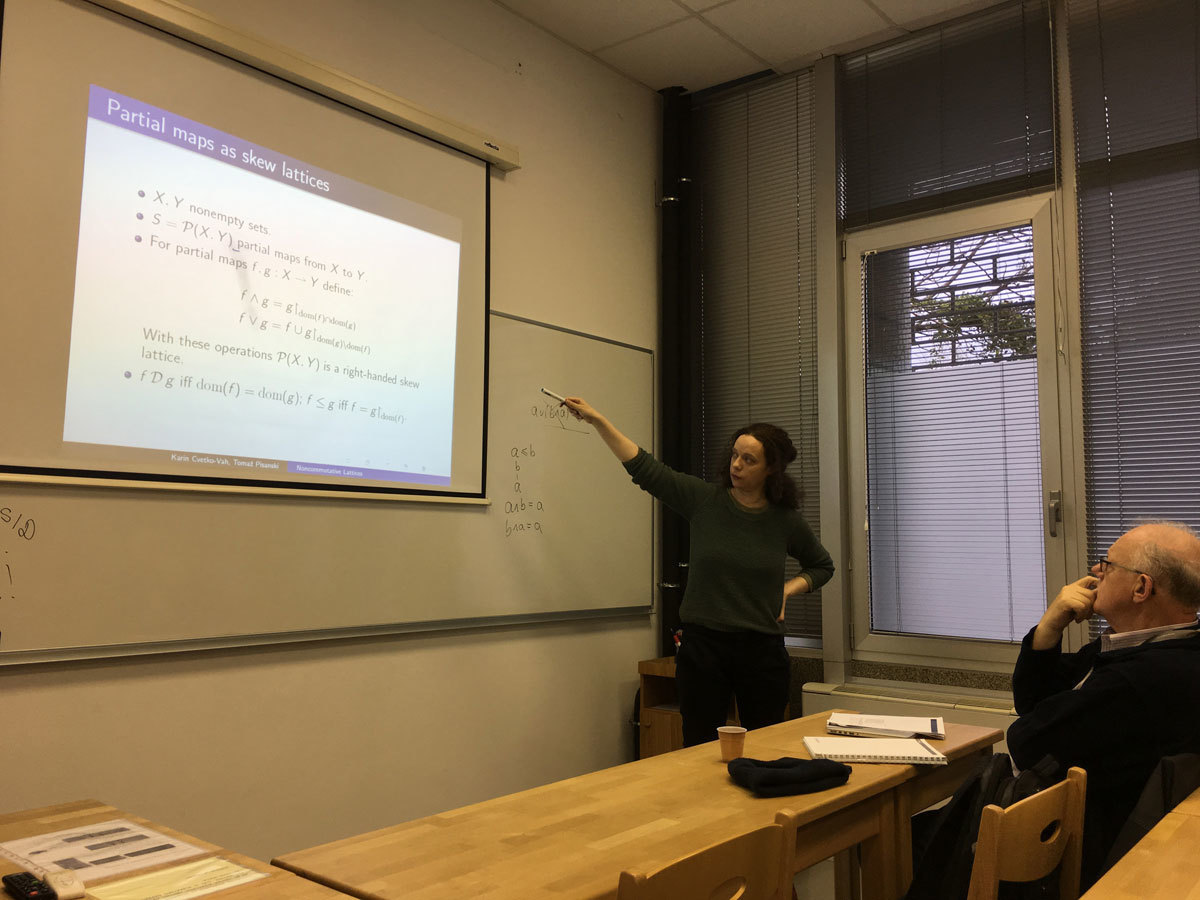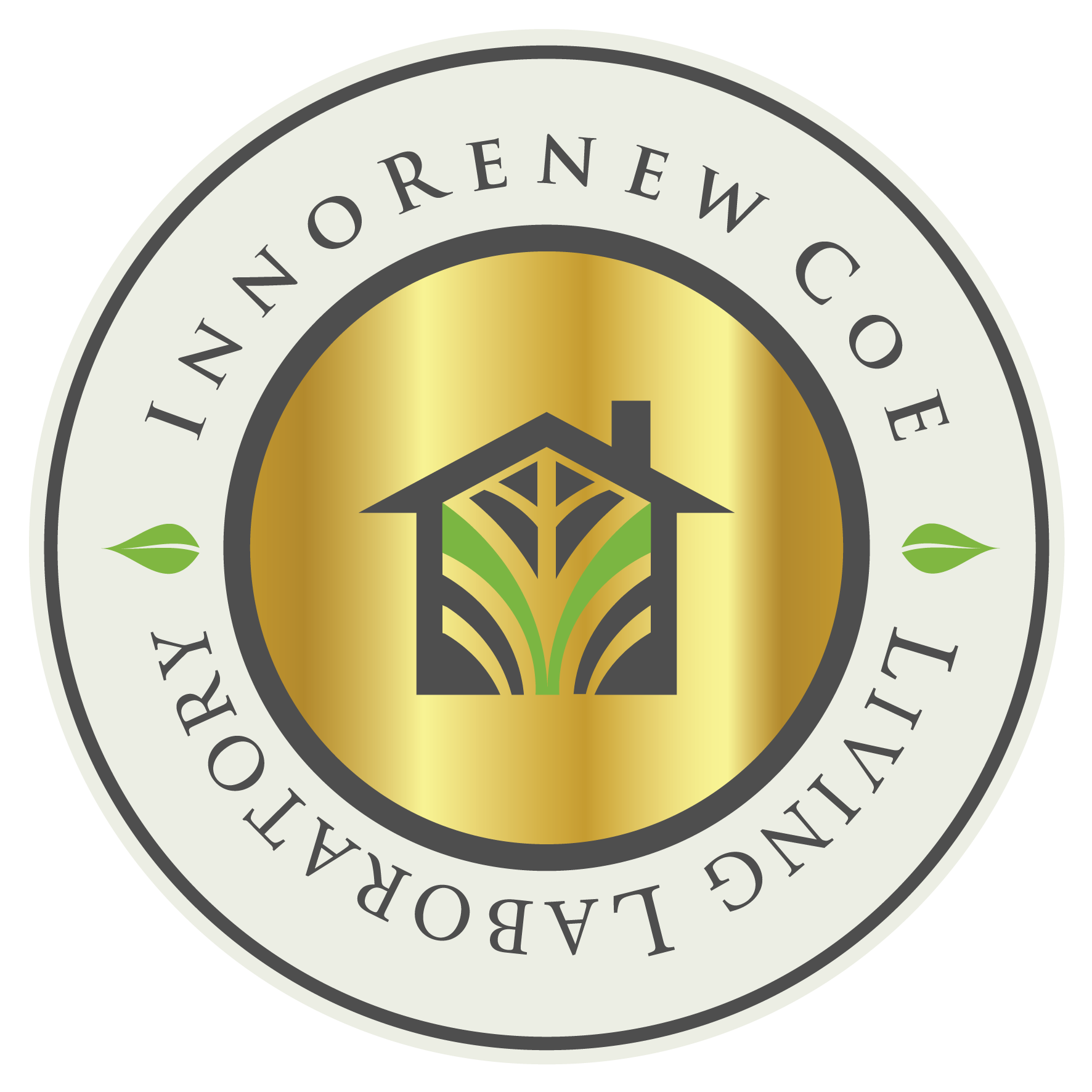
Raziskovalni matematični seminar - Arhiv
| 2026 | 2025 | 2024 | 2023 | 2022 | 2021 | 2020 | 2019 | 2018 | 2017 | 2016 | 2015 | 2014 | 2013 | 2012 | 2011 | 2010 |
| 1 | 2 | 3 | 4 | 5 | 6 | 7 | 8 | 9 | 10 | 11 | 12 |
The subgroup lattice of a group G is the poset consisting of the subgroups of G, ordered by inclusion. Can you recognize whether a group is in a class from its subgroup lattice? For some nice families of groups such as abelian, Hamiltonian, or nilpotent, the answer is "no"; while for other classes such as supersolvable or solvable, the answer is "yes". I'll give several conditions on a subgroup lattice that are equivalent to solvability of the originating group: combinatorial, topological, and commutative algebraic.
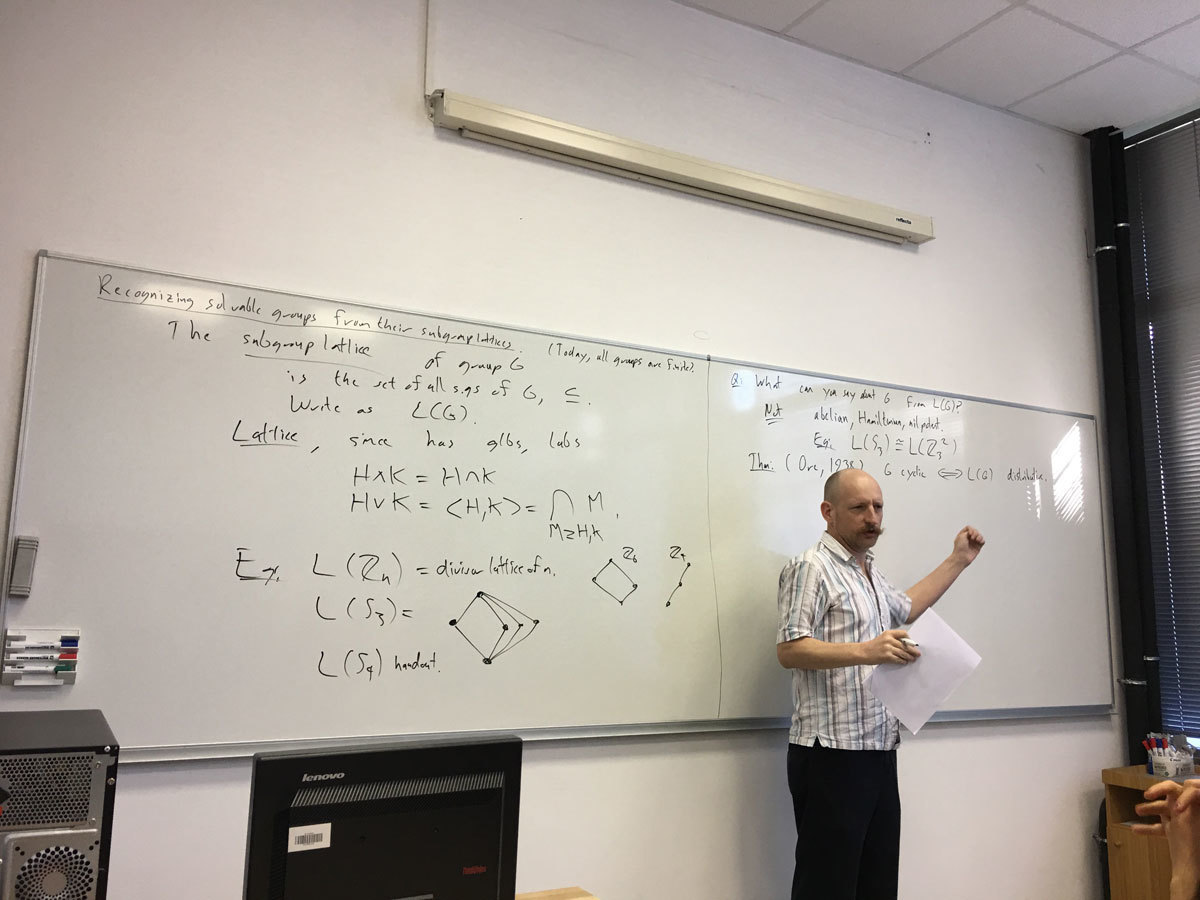
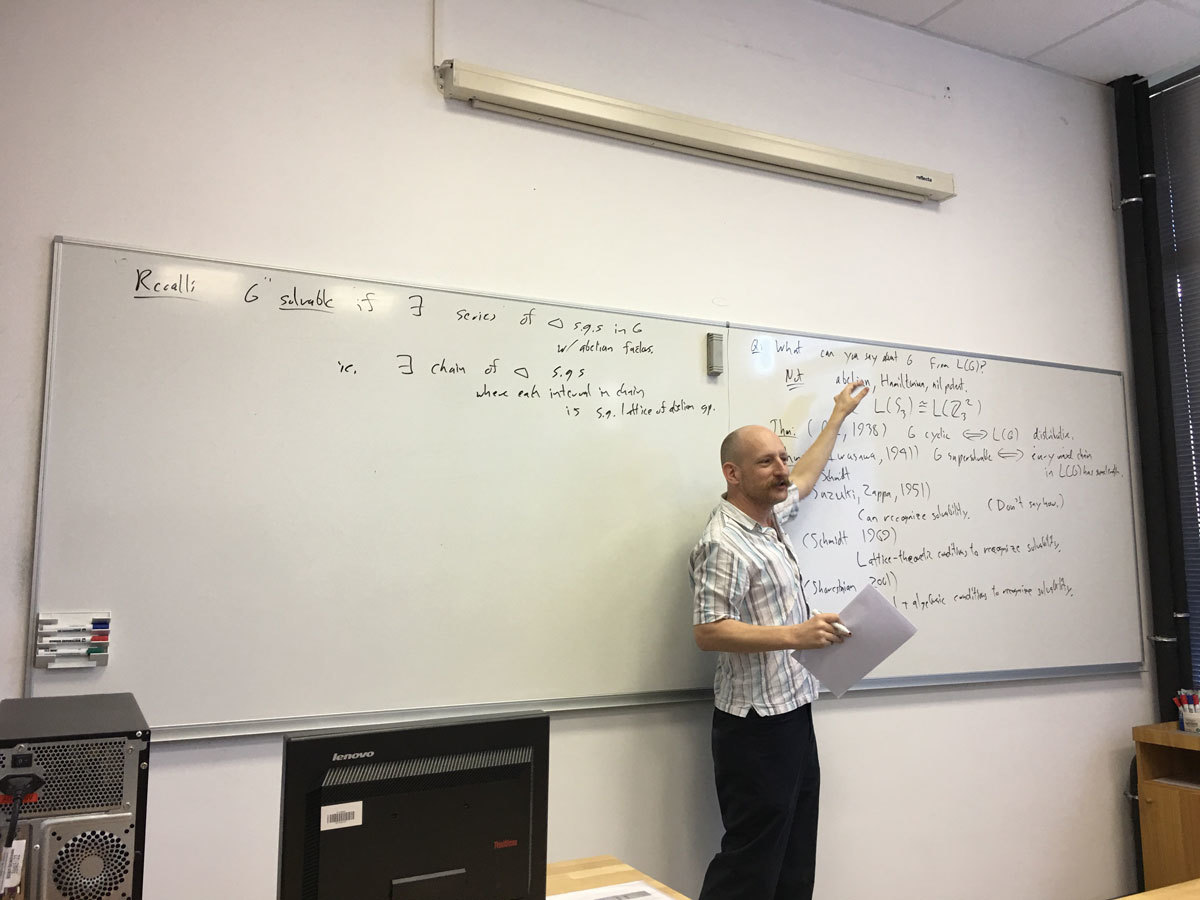
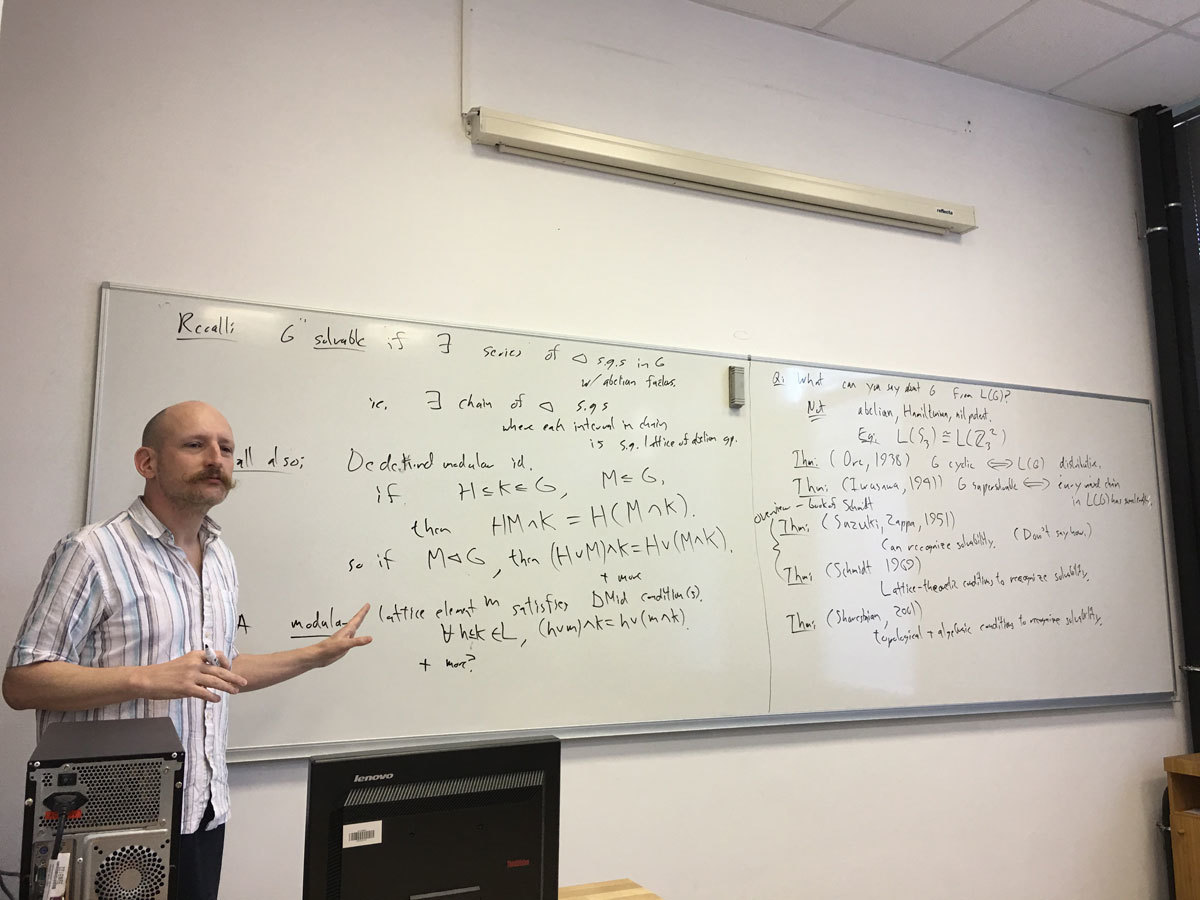
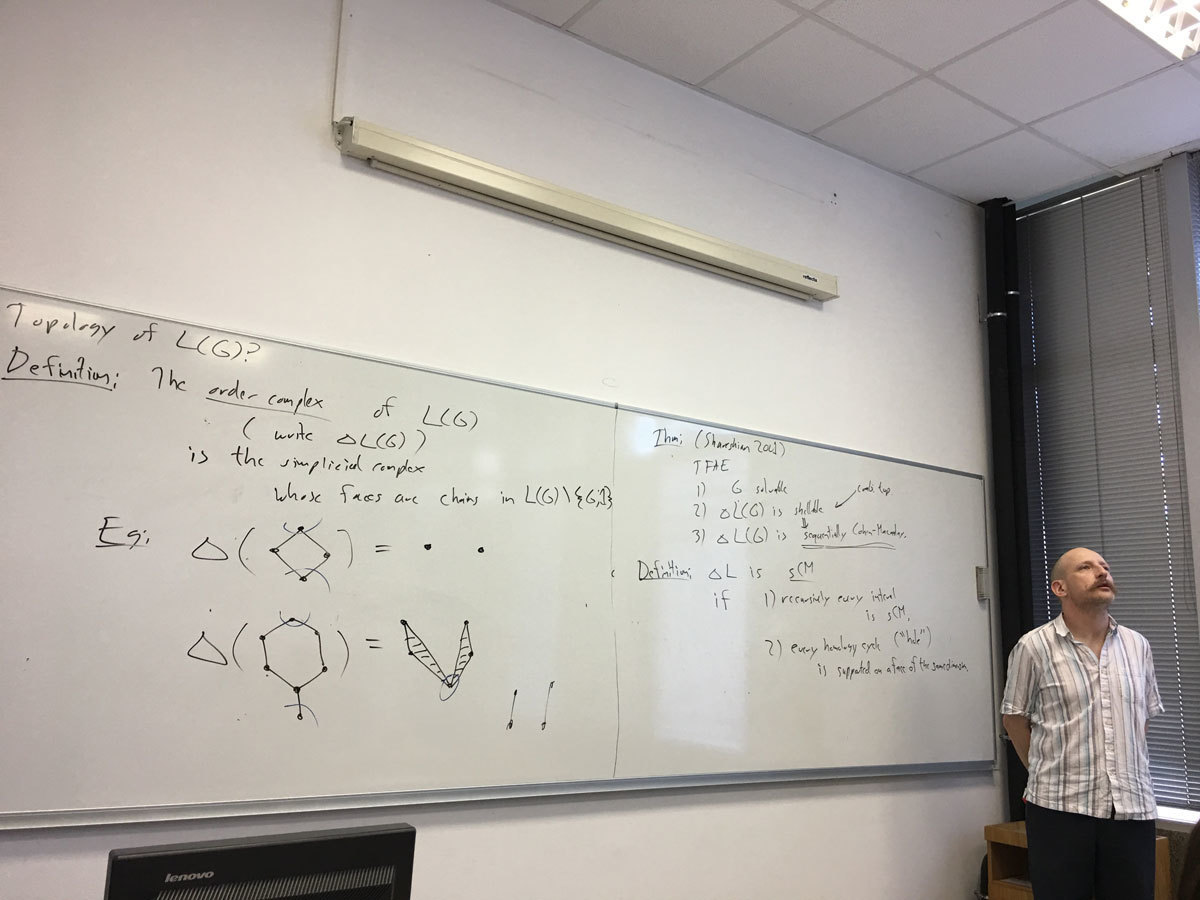
Frucht (1939) proved that every abstract finite group is isomorphic to the automorphism group of some finite graph. Jordan (1869) studied automorphism groups of trees. Babai (1991) gives an elegant inductive description of the automorphism groups of trees as the class of groups of closed under direct products and wreath products with symmetric groups. We call similar inductive characterizations of possible automorphism groups as Jordan-like.
We describe Jordan-like characterizations of the automorphism groups of several geometrically represented graph classes including planar, interval, permutation, and circle graphs. These characterizations are based on a general technique in which an automorphism group is studied by its induced action on the set of all geometric representations: each automorphism is either an automorphism of a representation, or a morphism of one representation into another one. When the structure of all representations is well understood (for instance, captured by a suitable tree decomposition) and the action is faithful enough, we can deduce the automorphism groups.
In my talk, I will illustrate this technique on the most complicated case of planar graphs. Babai (1975) characterized which abstract groups can be realized as the automorphism groups of planar graphs. We describe the first inductive Jordan-like characterization of these groups. We use the augmented 3-connected decomposition which divides a graph into its 3-connected components while capturing its symmetries, developed for our previous study of regular graph covers of planar graphs. The Jordan-like characterization first describes the stabilizers of vertices in connected planar graphs as the class of groups closed under the direct and semidirect products with symmetric, dihedral and cyclic groups. The automorphism group of a connected planar graph is then obtained as a semidirect product of a direct product of these stabilizers with a spherical group.
(joint work with Roman Nedela and Peter Zeman)
Lattices appear throughout mathematics: from logics and set theory, to algebra (congruence lattice and lattice of subvarieties), discrete mathematics (face lattice of a polytope and matroids) and topology. Noncommutative lattices can be studied either as generalizations of lattices or as double semigroups of idempotents. We shall describe both approaches and present results that reveal an interesting geometrical structure that allows several combinatorial observations.
